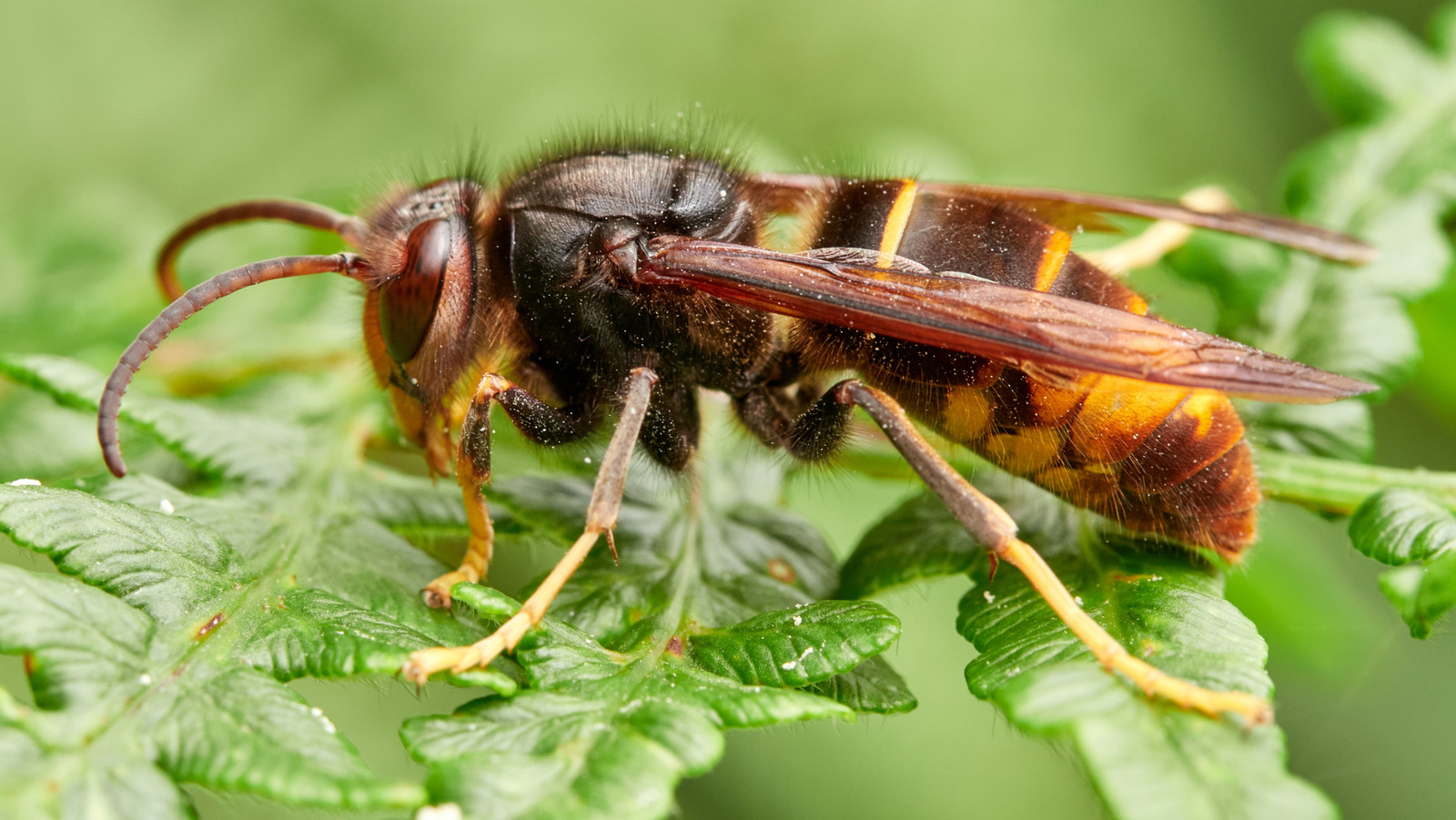Science
Scientists Deploy High-Tech Micro-Transmitters to Track Asian Hornets

Asian hornets, known for their aggressive predation on bees and other pollinators, are becoming an increasing concern in the United Kingdom. Recent data indicates that sightings of these invasive insects have reached record levels. In response, the U.K. National Bee Unit has initiated an innovative project employing micro-transmitters to track the flight paths of these hornets, aiming to locate their nests more effectively.
Micro-Transmitters Revolutionize Tracking Methods
The new tracking devices are lightweight, weighing less than 160 milligrams, ensuring that the hornets can fly without significant hindrance. These micro-transmitters feature short antennas and are designed to be easily modifiable and reusable. The U.K.’s Animal and Plant Health Agency (APHA) has begun deploying four sets of these devices, with successful field tests providing optimism for their broader application.
To attach the micro-transmitters, experts first capture hornets at known sighting locations. After marking a hornet during feeding, researchers attach the device to its waist before releasing it back into the wild. The tracking system allows for triangulation of the hornet’s location using handheld directional receivers, drones, or a mobile application, with an operational range of approximately 0.6 miles.
Public Engagement and Broader Applications
The micro-transmitter initiative is considered a cost-effective response to the challenges posed by Asian hornets. The rechargeable battery adds to its practicality. A community-driven app, Asian Hornet Watch, has been instrumental in gathering data, logging around 30,000 reports last year alone. This app not only helps track hornet sightings but also serves a similar purpose in regions like India, where snake sightings are reported to assist victims of snake bites.
APHA emphasizes the importance of public participation in monitoring these invasive species. They provide a guide for identifying yellow-legged hornets and encourage citizens to report sightings through the Asian Hornet Watch app, available on both iOS and Android platforms. The integration of technology in ecological monitoring reflects a growing trend towards innovative solutions in wildlife conservation.
In a fascinating historical parallel, the CIA once considered a project named Project Acoustic Kitty, which involved equipping cats with transmitters for espionage purposes. This current initiative, while far removed from espionage, highlights the innovative approaches being employed to address ecological challenges posed by invasive species.
The ongoing battle against Asian hornets is not only a matter of protecting local biodiversity but also underscores the critical role of technology and community engagement in wildlife conservation efforts.
-

 Lifestyle5 months ago
Lifestyle5 months agoLibraries Challenge Rising E-Book Costs Amid Growing Demand
-

 Sports4 months ago
Sports4 months agoTyreek Hill Responds to Tua Tagovailoa’s Comments on Team Dynamics
-

 Sports4 months ago
Sports4 months agoLiverpool Secures Agreement to Sign Young Striker Will Wright
-

 Lifestyle4 months ago
Lifestyle4 months agoSave Your Split Tomatoes: Expert Tips for Gardeners
-

 Lifestyle4 months ago
Lifestyle4 months agoPrincess Beatrice’s Daughter Athena Joins Siblings at London Parade
-

 Science4 months ago
Science4 months agoSan Francisco Hosts Unique Contest to Identify “Performative Males”
-

 World4 months ago
World4 months agoWinter Storms Lash New South Wales with Snow, Flood Risks
-

 Science5 months ago
Science5 months agoTrump Administration Moves to Repeal Key Climate Regulation
-

 Business5 months ago
Business5 months agoSoFi Technologies Shares Slip 2% Following Insider Stock Sale
-

 Science5 months ago
Science5 months agoNew Tool Reveals Link Between Horse Coat Condition and Parasites
-

 Sports4 months ago
Sports4 months agoElon Musk Sculpture Travels From Utah to Yosemite National Park
-

 Science5 months ago
Science5 months agoNew Study Confirms Humans Transported Stonehenge Bluestones









